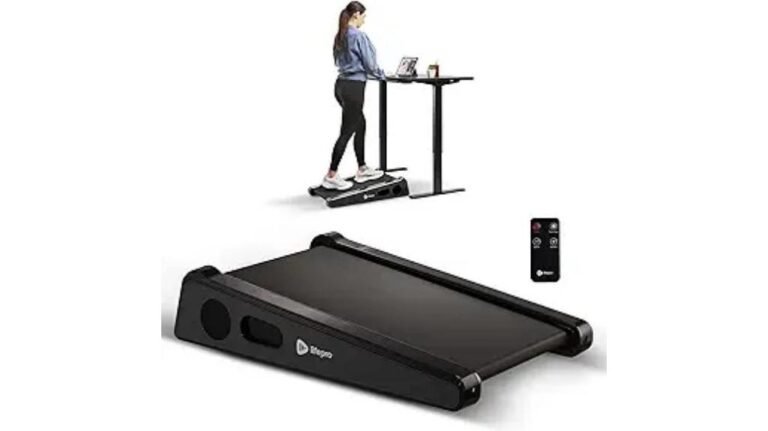Foam Rolling: How to Improve Flexibility and Reduce Soreness
Foam rolling fascinates fitness enthusiasts for its potential to boost flexibility and alleviate muscle soreness effectively.
But do you truly grasp the ins and outs of this practice? From the basics of foam rolling to advanced techniques, there's a wealth of knowledge waiting to be uncovered.
So, how can you make the most of this simple tool to enhance your performance and recovery? Stay tuned to discover the secrets to maximizing the benefits of foam rolling for your fitness journey.
Key Takeaways
- Enhance flexibility and reduce soreness through foam rolling techniques.
- Promote self-myofascial release for muscle recovery and injury prevention.
- Increase blood flow and release tension to improve overall performance.
- Optimize foam rolling with targeted muscle release for enhanced flexibility and recovery.
Benefits of Foam Rolling
Foam rolling offers numerous benefits for improving flexibility and reducing muscle soreness through self-myofascial release techniques. By incorporating foam rolling into your routine, you can experience enhanced flexibility gains and expedited muscle recovery. These benefits play a crucial role in injury prevention by promoting proper muscle function and reducing the likelihood of overuse injuries.
When you engage in foam rolling, you're actively targeting trigger points and tight areas in your muscles, which helps to increase blood flow and release tension. This process not only aids in enhancing flexibility but also accelerates the recovery of muscle tissue post-exercise. By regularly including foam rolling in your workout regimen, you can improve your overall performance and minimize the risk of muscle imbalances that could lead to injuries.
Proper Foam Rolling Techniques
To maximize the benefits of foam rolling, ensure proper alignment of your body and the foam roller before beginning the rolling motion. Proper foam rolling techniques are essential for effective results and injury prevention.
Here are some key points to keep in mind:
- Breathing Techniques: Focus on deep breathing while foam rolling. Inhale slowly and deeply through your nose, feeling your belly rise, then exhale fully through your mouth. Controlled breathing can help relax your muscles and enhance the effectiveness of the foam rolling session.
- Body Positioning: Pay attention to your body positioning during foam rolling. Maintain a neutral spine by engaging your core muscles and avoiding overarching or rounding your back. This helps target the intended muscle group and prevents strain on your joints.
- Rolling Direction: Roll slowly and steadily over the muscle group, moving back and forth for 30-60 seconds. Avoid rolling directly over joints or bones. If you encounter a trigger point (a tender spot), pause and apply gentle pressure for 20-30 seconds while continuing to breathe deeply.
Target Areas for Foam Rolling
Proper foam rolling techniques are vital for targeting specific muscle groups effectively, such as the upper back, quadriceps, and hamstrings. When it comes to glute activation, foam rolling the glutes can help improve muscle function and mobility. Start by sitting on the foam roller with one ankle crossed over the opposite knee, then shift your weight to one side and roll back and forth to target the glute muscles.
For upper back relief, lie on the foam roller perpendicular to your spine with it positioned in the middle of your back. Support your head with your hands and gently roll up and down to release tension in the upper back muscles.
Additionally, focusing on the quadriceps and hamstrings can aid in reducing muscle soreness and improving flexibility. By applying pressure to these areas using the foam roller, you can help release knots and tightness, promoting better muscle function and range of motion.
Foam Rolling for Recovery
Enhance your recovery post-workout by incorporating foam rolling into your routine. Foam rolling isn't just beneficial for improving flexibility but also aids in faster recovery. Here are some recovery tips for using foam rolling effectively:
- Reduce Muscle Soreness: Foam rolling helps in reducing muscle soreness by breaking down adhesions and scar tissue that may have built up during exercise. By targeting specific muscle groups, you can alleviate tension and soreness, promoting quicker recovery.
- Enhance Blood Circulation: Foam rolling increases blood flow to the muscles, which can help in the removal of waste products and supply of essential nutrients. This improved circulation can speed up the recovery process and reduce inflammation in the muscles.
- Relaxation and Stress Relief: Using a foam roller post-workout can also promote relaxation and reduce stress. The pressure applied during foam rolling can trigger a relaxation response in the body, helping you unwind after a strenuous workout session.
Foam Rolling Frequency
After understanding the benefits of foam rolling for recovery, consider the optimal frequency for incorporating foam rolling into your routine. When it comes to foam rolling frequency, it's essential to strike a balance between reaping the benefits and avoiding overtraining risks.
Foam rolling can be done daily, either before or after your workout, to help improve circulation, reduce muscle tension, and enhance flexibility. Daily foam rolling sessions, when done correctly, can aid in preventing injury and promoting faster recovery. However, overdoing it can lead to potential risks such as increased muscle damage or decreased performance.
On the other hand, incorporating foam rolling into your weekly routines can also be beneficial. Designating specific days for longer, more focused foam rolling sessions can target different muscle groups and provide a more thorough release of tension. This approach allows for adequate recovery time between sessions, reducing the likelihood of overtraining and maximizing the benefits of foam rolling for improving flexibility and reducing soreness.
Combining Foam Rolling With Stretching
When incorporating foam rolling with stretching, you can benefit from the synergistic effects of both practices.
Consider the timing and order in which you perform these techniques to maximize their effectiveness.
Implementing proper techniques for foam rolling and stretching can help you achieve the best results in terms of flexibility and soreness relief.
Benefits of Both
Combining foam rolling with stretching can significantly improve flexibility and reduce muscle soreness. When you integrate these two practices into your routine, you unlock a range of benefits that work synergistically to enhance your overall well-being. Here are three compelling reasons why you should consider incorporating both foam rolling and stretching into your fitness regimen:
- Enhanced Flexibility: By combining foam rolling with stretching, you can target different muscle groups effectively, leading to increased flexibility and improved range of motion.
- Faster Recovery: This dynamic duo aids in reducing muscle soreness post-workout, promoting quicker recovery times and allowing you to get back to your training routine sooner.
- Improved Performance: Together, foam rolling and stretching can help optimize muscle function, leading to enhanced athletic performance and reduced risk of injury.
Timing and Order
To effectively combine foam rolling with stretching, consider the optimal timing and sequence in your fitness routine. When aiming to improve performance and prevent injuries, it is crucial to understand the best way to integrate these practices. Here is a simple guide to help you maximize the benefits of foam rolling and stretching:
| Timing | Order | Purpose |
|---|---|---|
| Before workout | Foam rolling | Improve flexibility |
| Stretching | Enhance range of motion | |
| After workout | Stretching | Reduce muscle soreness |
| Foam rolling | Aid in muscle recovery | |
Techniques for Best
Consider incorporating specific foam rolling techniques into your stretching routine to optimize flexibility and alleviate soreness effectively. By combining foam rolling with stretching, you can enhance your overall performance and recovery. Here are three key techniques to maximize your benefits:
- Integrate Mobility Drills: Begin your session with foam rolling to target tight areas, followed by mobility drills to enhance joint range of motion. This sequence prepares your muscles for stretching, improving flexibility.
- Include Warm-Up Routines: Prior to stretching, use foam rolling as part of your warm-up routine. This helps increase blood flow to the muscles, making them more pliable and ready for deeper stretches.
- Focus on Injury Prevention and Muscle Activation: Utilize foam rolling to prevent injuries by targeting muscle imbalances and promoting proper muscle activation before engaging in stretching exercises.
Advanced Foam Rolling Tips
To enhance your foam rolling routine, consider advanced techniques like targeted muscle release, dynamic movements, and experimenting with different foam densities. These methods can help you address specific areas of tightness, improve flexibility, and reduce soreness more effectively.
Targeted Muscle Release Techniques
How can you effectively apply targeted muscle release techniques using advanced foam rolling tips to enhance flexibility and reduce soreness? When it comes to releasing muscle tension and activating muscles, incorporating specific techniques can elevate your foam rolling routine. Here are three advanced tips to optimize your targeted muscle release:
- Focus on Trigger Points: Identify the knots or trigger points in your muscles and spend extra time rolling over these areas to release tension effectively.
- Use Active Movement: Combine foam rolling with active movements like flexing and extending the target muscle to enhance muscle activation and promote better flexibility.
- Progressive Pressure: Gradually increase the pressure applied to the muscle over time to allow for a deeper release while ensuring it remains within your comfort level.
Incorporating Dynamic Movements
Incorporate dynamic movements into your foam rolling routine to enhance muscle activation and improve flexibility effectively.
Prior to foam rolling, engage in dynamic warm-ups like leg swings or arm circles to increase blood flow and prepare your muscles for stretching.
By combining mobility exercises such as hip rotations or shoulder dislocations with foam rolling, you can target specific areas more efficiently.
Dynamic movements help activate the muscles surrounding the targeted area, allowing for a deeper release during foam rolling.
This combination can lead to improved range of motion and better overall flexibility.
Remember to perform these movements in a controlled manner, focusing on proper form and alignment to maximize the benefits of your foam rolling session.
Utilizing Different Foam Densities
Enhance your foam rolling routine by experimenting with different foam densities to target specific muscle groups more effectively and intensify your recovery process. When comparing foam densities, consider the following:
- Soft Density: Ideal for beginners or individuals with heightened muscle sensitivity, providing a gentle massage while promoting blood flow.
- Medium Density: Offers a balance between firmness and comfort, suitable for general muscle maintenance and reducing muscle tension.
- Firm Density: Best for experienced individuals seeking deep tissue relief, aiding in breaking up adhesions and scar tissue for enhanced muscle recovery.
Conclusion
In conclusion, incorporating foam rolling into your routine can help improve flexibility and reduce soreness. By rolling out tight muscles, you can increase blood flow and break up fascia, leading to better overall mobility.
So next time you hit the gym, don't forget to grab your foam roller and roll away those knots like a skilled sculptor carving out a masterpiece. Your body will thank you for it!







